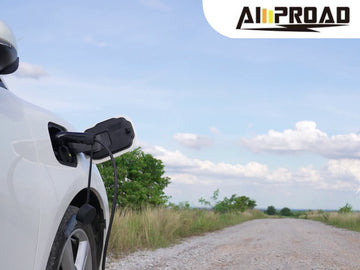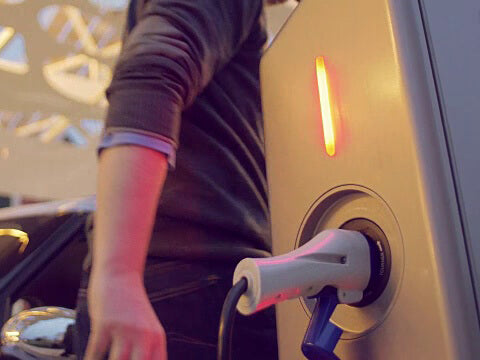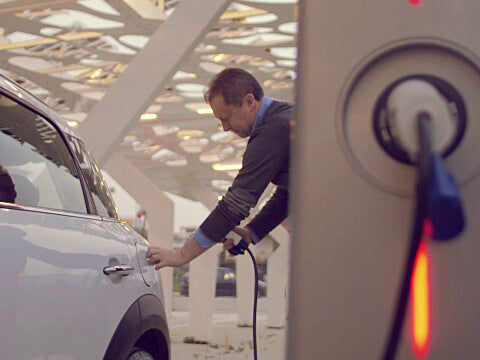
Imagine wanting to switch to an electric vehicle (EV), but worrying about finding a place to charge or how long it takes. That's a major barrier to EV ownership. Convenient and reliable charging, especially at home and work, is crucial. It eases range anxiety and makes EVs a more practical and attractive choice for everyday drivers, accelerating the shift towards a cleaner future.
Home and Work Charging Options
What are the common methods for charging EVs at home and work?
When it comes to charging electric vehicles (EVs) at home and work, several methods are commonly employed. At home, EV owners often rely on standard electrical outlets, also known as Level 1 charging, to recharge their vehicles overnight. Workplace charging solutions typically include dedicated charging stations installed in parking lots or garages, offering Level 2 charging capabilities. These stations provide faster charging speeds than standard outlets, allowing employees to top up their EVs while at work.
How does a Level 2 EVSE charger compare to a standard outlet for charging speed and convenience?
Level 2 Electric Vehicle Supply Equipment (EVSE) chargers offer significant advantages over standard electrical outlets in terms of charging speed and convenience. While a standard outlet provides Level 1 charging, which typically delivers around 4-5 miles of range per hour of charging, a Level 2 EVSE charger can deliver significantly faster charging rates. Level 2 chargers can add around 20-25 miles of range per hour of charging, making them much more efficient for topping up an EV's battery, especially during shorter stops or breaks.
Additionally, Level 2 EVSE chargers are more convenient to use than standard outlets due to their dedicated charging infrastructure. EV owners can simply plug in their vehicle to the Level 2 charger without the need for adapters or special equipment. This ease of use, combined with faster charging speeds, makes Level 2 EVSE chargers an ideal choice for both home and workplace charging solutions.
Furthermore, some workplaces may also offer Tesla destination charger, which is Level 2 charging stations specifically designed for Tesla vehicles. These chargers provide similar charging speeds to standard Level 2 chargers but are compatible exclusively with Tesla vehicles. While convenient for Tesla owners, they may not be suitable for drivers of other EV brands.
Reliability Considerations
Navigating the realm of electric vehicle (EV) charging reliability entails understanding various factors. Let's delve into the complexities surrounding Level 2 EVSE chargers, both at home and in the workplace, to uncover how reliability is influenced.
At home, what electrical factors can affect the reliability of Level 2 EVSE charger use?
Several electrical factors can impact the reliability of Level 2 EVSE charger use at home. Firstly, existing home wiring may need upgrades to support the increased load of a Level 2 charger. Homes with older electrical systems may not have the capacity to handle the additional power demands, leading to potential issues such as overheating or circuit overload. Homeowners should consider consulting with a qualified electrician to assess their electrical system's capacity and make any necessary upgrades to ensure safe and reliable charging.
Might existing home wiring need upgrades to support a Level 2 charger?
Yes, existing home wiring may require upgrades to support the increased power demand of a level 2 electric car charger. Older homes may have wiring that is not rated for the higher amperage required by Level 2 chargers, which could lead to overheating or electrical hazards. Upgrading the electrical panel and wiring to accommodate the increased load is essential to ensure safe and reliable charging.
How can homeowners ensure their electrical system can handle the increased load?
Homeowners can ensure their electrical system can handle the increased load of a Level 2 charger by consulting with a qualified electrician. An electrician can assess the capacity of the home's electrical panel and wiring and make any necessary upgrades to support the charger's power requirements. Additionally, homeowners should ensure that the charger is installed in compliance with local building codes and regulations to ensure safety and reliability.
What external factors can influence the availability of charging at home (e.g., power outages)?
External factors such as power outages can impact the availability of charging at home. During a power outage, EV owners may not have access to electricity to charge their vehicles, rendering the Level 2 EV charger unusable. Investing in backup power solutions such as generators or battery backup systems can help mitigate the impact of power outages on charging availability and ensure continued access to reliable charging at home.
How does workplace infrastructure impact employee access to reliable Level 2 EVSE charger use?
Workplace infrastructure plays a crucial role in determining employee access to reliable Level 2 EVSE charger use. Designated parking spaces with Level 2 charger access must be available and conveniently located for employees to use. Additionally, the workplace electrical grid must be able to handle the additional load of multiple Level 2 chargers operating simultaneously without causing disruptions or overloads.
Are there enough designated parking spaces with Level 2 charger access for employees?
Ensuring that there are enough designated parking spaces with level 2 electric vehicle charger access for employees is essential for providing reliable charging infrastructure in the workplace. Employers should assess the demand for EV charging among employees and allocate sufficient parking spaces with charger access to meet their needs. Additionally, employers may consider implementing charging scheduling systems or policies to optimize charger usage and ensure fair access for all employees.
Can the workplace electrical grid handle the additional load of multiple Level 2 chargers?
The workplace electrical grid must be able to handle the additional load of multiple Level 2 chargers operating simultaneously to ensure reliable charging for employees. Employers should work with qualified electricians to assess the capacity of the electrical infrastructure and make any necessary upgrades to support the increased power demand. Implementing load management systems or smart charging solutions can also help optimize charger usage and prevent overloads on the electrical grid.
What role do workplace charging policies and maintenance practices play in charger reliability for employees?
Workplace charging policies and maintenance practices play a significant role in ensuring charger reliability for employees. Clear policies regarding charger usage, scheduling, and etiquette can help prevent conflicts and ensure fair access to charging infrastructure. Additionally, regular maintenance and inspection of chargers by qualified technicians are essential to identify and address any issues promptly, minimizing downtime and ensuring reliable charging for employees. Employers should prioritize proactive maintenance and communication to optimize charger reliability and enhance the overall employee charging experience.
Alternatives and Backups

Are there alternative charging options available if a Level 2 EVSE charger is unavailable (e.g., standard outlets)?
Yes, EV owners have alternative charging options available if a Level 2 EVSE charger is unavailable. One common alternative is using standard electrical outlets, also known as Level 1 charging. While Level 1 charging is slower than Level 2 charging, it can still provide a reliable means of recharging an EV's battery, especially for overnight charging at home or during emergencies when Level 2 chargers are not accessible. Additionally, some public charging stations may offer Level 1 charging as a backup option for EV owners.
What backup solutions can EV owners consider to ensure they can charge their vehicles in case of power outages or charger malfunctions?
To ensure they can charge their vehicles in case of power outages or charger malfunctions, EV owners can consider several backup solutions. One option is investing in a portable Level 2 EVSE charger, which can be used with a standard electrical outlet or generator to provide emergency charging capability. Another option is installing a backup power system such as a home battery storage system or generator, which can provide backup power to the EV charger during power outages. Additionally, EV owners can explore alternative charging locations such as public charging stations, workplaces, or commercial charging networks to access charging facilities in case of emergencies. By having backup solutions in place, EV owners can ensure they have reliable access to charging infrastructure and minimize disruptions to their charging routine.
Reliable Charging Solutions for EV Owners
Considering the various factors, can Level 2 EVSE chargers provide a reliable charging solution at home or work?
Level 2 EVSE chargers can offer a reliable charging solution at both home and work. These chargers provide faster charging speeds compared to standard outlets, making them efficient for topping up an EV's battery. However, the reliability of Level 2 chargers depends on several factors, including the condition of the electrical infrastructure, availability of designated parking spaces with charger access, and workplace charging policies.
What steps can EV owners and workplaces take to promote a more reliable charging experience?
To promote a more reliable charging experience, EV owners and workplaces can take several steps:
- Ensure proper installation: EV owners should have Level 2 chargers installed by qualified electricians to ensure compliance with building codes and safety standards.
- Perform regular maintenance: Both EV owners and workplaces should conduct regular maintenance checks on chargers to identify and address any issues promptly.
- Invest in backup solutions: EV owners can invest in portable chargers or backup power systems to ensure charging capability during emergencies or power outages.
- Implement charging policies: Workplaces should establish clear policies regarding charger usage, scheduling, and etiquette to optimize charger availability and prevent conflicts among employees.
- Monitor charger usage: Workplaces can implement monitoring systems to track charger usage and identify opportunities for optimization or expansion of charging infrastructure.
By taking these steps, EV owners and workplaces can enhance the reliability of charging infrastructure and provide a more seamless charging experience for EV users.



